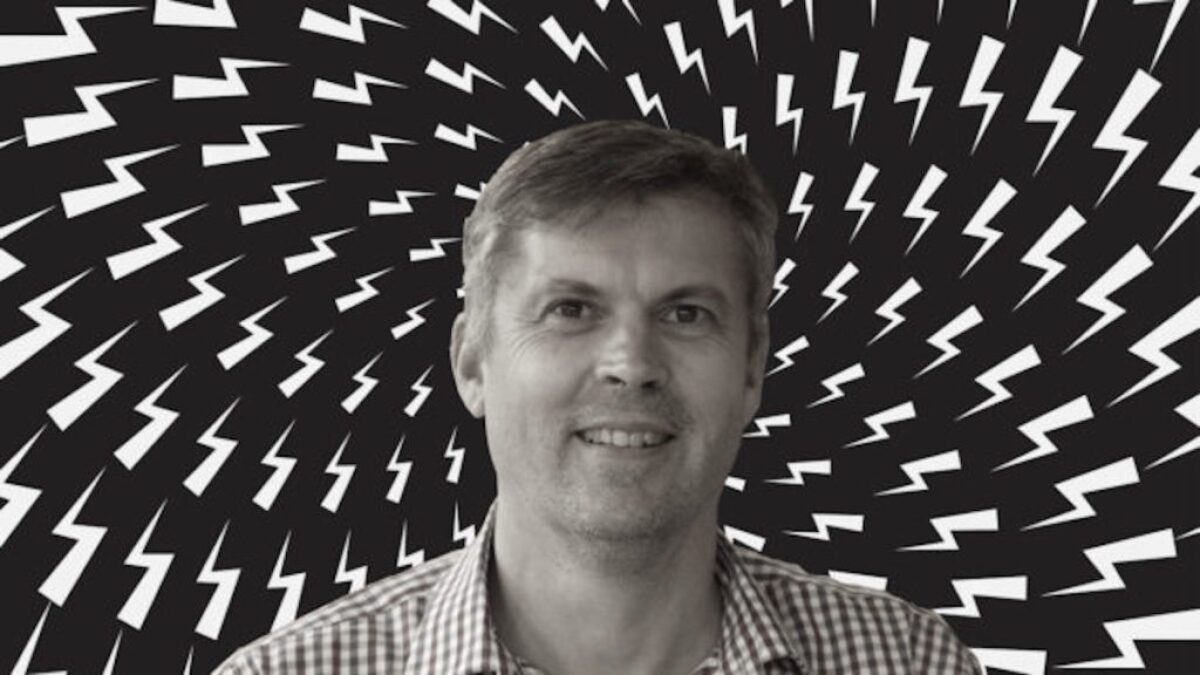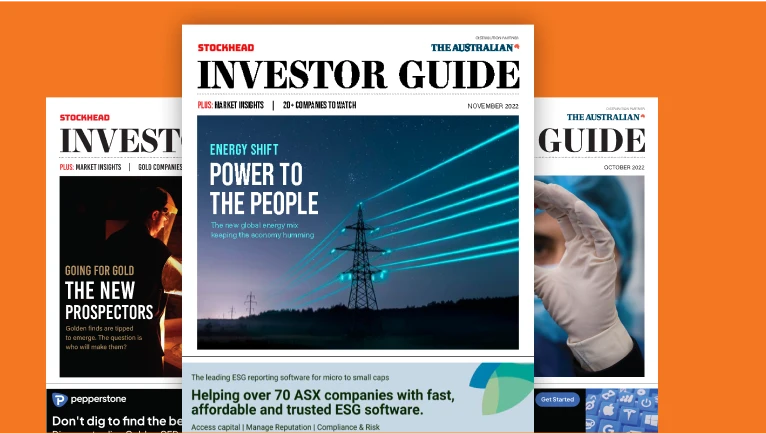Dr Boreham’s Crucible: Even as it chills, can cryopreserver Vitrafy heat up?

"What's it all thaw?" Tim Boreham asks. Maybe Vitrafy has some answers. Pic: supplied
For Vitrafy Life Sciences (ASX:VFY) chief Kate Munnings, two isolated local controversies are testament to how the recently listed cryopreservation outfit’s technology can be put to good use.
“With every problem there’s an opportunity,” she says.
The first incident was Monash IVF’s mishandling of biological samples that led to a mother being implanted with the wrong embryo.
The second is the ongoing disquiet about the environmental impact of intensive salmon farming in Tasmania, which emerged as a key issue in the recent Federal election.
Munnings reckons Vitrafy can ameliorate both problems.
In the case of fish, it’s better husbandry practices to make the industry more sustainable.
“We are looking at how we craft what we offer to that market as an opportunity to help with challenges they have experienced,” she says.
In the case of the human biological samples, it’s better freezing via Vitrafy’s device and better tracking via its Lifechain internet cloud-based software.
“As a result of the embryo mix up, we have started conversations in the IVF sector about how Lifechain, with its quality and tracking and monitoring of biologic material, could be utilised,” she says.
Plating up a new company
There’s seemingly little correlation between a cooking show and cryopreservation, but Vitrafy owes its existence to the culinary reality television show Masterchef.
Vitrafy was co-founded by amateur chef Brent Owens, who won the cook-off in 2014.
The victory sparked Owens’ interest in food cryopreservation and a wider interest in the art of deep freezing – all self-taught.
“The idea was that if you could cryopreserve an egg, you could cryopreserve anything,” he said.
Owens founded Vitrafy with Brian Taylor and Sean Cameron in 2017, with an initial interest in consumer applications, notably food (their backgrounds are in consumables export and manufacturing).
The trio soon shifted their interest to human health (such as artificial insemination, blood products and cell gene therapy) and animal applications.
Munnings headed the formerly ASX listed, now privatised, in-vitro fertilisation (IVF) house Virtus Health from March 2020 to November 2023.
Munnings is also a non-executive director of Bunnings parent company Wesfarmers and the New Zealand-listed aged-care operator Ryman Healthcare.
A Vitrafy non-executive director, Prof John McBain needs no introduction, having founded Melbourne IVF.
Vitrafy listed on the ASX on November 27 2024, after a $35 million capital raising at $1.84 a share.
Vitrafy’s ‘secret sauce’
Vitrafy’s products consist of freezing, thawing and packaging devices, overlaid by the Lifechain algorithm-based monitoring software.
Cryopreservation has been around at least since 1966, when the deceased Walt Disney was rumoured to be (although repeatedly denied by his family) immersed in a vat for future revival.
Vitrafy’s technology is based on the principles of heat transfer, thermo-dynamics and fluid dynamics to remove heat from a sample “in a controlled and consistent way at various temperatures and speeds”.
The result is that freezing and thawing take minutes, rather than hours, thus reducing the risk of the specimens degrading.
In the US, the company says, 20% of blood platelet samples need to be thrown out because of inadequate cryopreservation, at a cost to the health sector of US$280 million.
Have you noted that, DOGE?
Different types of samples require different freezing temperatures and durations. Vitrafy’s ‘secret sauce’ is to be able to adapt the conditions to suit the sample.
Last year the US Food and Drug Administration approved Vitrafy for sperm, ova and blood product applications, under a fast-track predicate device path.
We came, we thawed, we conquered
Vitrafy’s US efforts centre on a collaboration with the US Army Institute of Surgical Research, which carried out a phase I study on blood platelet preservation.
The project aims to improve the shelf-life of emergency blood platelets, which is relevant for the battlefield.
Completed in April, the study reported platelet recovery of 88%, well above the desired threshold and without the need for cryoprotectants (see below).
Post-thaw, the study analysed 24 units from eight healthy donors.
The parties are moving to the next stage of the study, which in part involves higher throughput and is expected to complete by the end of the year.
In the US, Vitrafy has also held discussions with the Red Cross and Blood Centres of America, a collective of independent biobanks.
Fishy business
Munnings says the salmon industry has a growing interest in artificial insemination, to improve hatchery and harvest management and thus address the over-fishing allegations.
Following pilot testing, Vitrafy has signed a three-year commercial contract with Tasmanian salmon producer Huon Aquaculture to freeze and thaw brood stock sperm.
In Huon’s summer fertilisation program, Vitrafy’s process of fertilising fresh salmon milt from vitrified material was compared to a rival’s method.
The result was a 72% fertilisation rate with Vitrafy’s method, compared with 75% for fresh milt and 45% for rival techniques.
The company has preserved a minimum 750 packs of salmon milt, representing 55% growth over three years (albeit from a low base).
Vitrafy is carrying out a paid pilot program with Tassal, another major salmon producer.
Holy cow! That’s an improvement
Vitrafy has a contract with the Ohio-based Select Sires, which accounts for 25% of the US bovine reproduction market. Cattle make up 40% of the US$5 billion-a-year global animal artificial insemination sector.
Comparing Vitrafy’s process to Select Sires’ protocols, a phase I trial saw an average 30% increase in bull semen motility (in effect, their ability to swim).
A planned phase II trial has been delayed to the December quarter, thanks to US President Donald Trump-related customs disruptions.
Under the non-exclusive arrangement, Vitrafy retains ownership of the protocols and data.
Freezing cells offers hot prospects
Cell and gene therapy (CGT) research is booming – notably in off-the-shelf ‘allogeneic’ cancer therapies derived from donor material.
But the frozen material must be as good as fresh, or else it is wasted.
Munnings says the company is holding “active conversations in the US and Australia with significant industry participants”.
The Trump administration’s cost-cutting drive has sparked concerns about CGT funding, but Munnings says it’s still a “vibrant industry looking for innovation.”
She says CGT’s approach to cryopreservation differs from the more traditional approach of the blood banks.
“But the blood banks are starting to collect blood for cell and gene therapies, so the two are starting to work together.”
Finances and performance
Essentially pre-commercial, Vitrafy reported March quarter receipts of $12,000 from its fish work.
The company burnt $356,000, taking cash on hand to $34 million.
Vitrafy’s expenses are running at $1.1 million a month.
Chief finance officer Simon Martin cautions spend will ramp up in the June half “as commercial development intensifies” before settling next year.
Vitrafy was awarded an Australian government $4.8m Industry Growth Program grant, for small companies with the potential for commercialisation.
The company has pocketed the first tranche and will bank the remainder as research and development progresses over the next six months.
Owens says the use of funds outlined in the initial public offer prospectus is on-time and on-budget.
As for the US tariff threat, the company sources some components from outside the US. But it is looking to derive as much as possible in the US, where its Melbourne-based contract manufacturer Planet Innovation has a facility (in California).
Vitrafy’s research and development base remains in the Victorian town of Ballarat which – aptly – is freezing in winter.
Its sparsely-traded shares have ranged between $2.03 on November 27 last year – the day after listing – and $1.08 on April 7 this year.
Vitrafy versus others
Vitrafy competes with three US giants: the Nasdaq-listed Azenta Inc and Cryoport Inc and Cytiva (an arm of the New York-listed Danaher Corporation).
Owens argues there’s more scope for cooperation than competition, given the parties tend to operate in different parts of the cryogenics supply chain.
“For instance, Vitrafy focuses on crypreservation, thawing and quality management steps, while Cryoport focuses on logistics and storage.”
A key selling point is the non-use of toxic cryoprotectants such as DMSO (dimethyl sulfoxide).
Before cells can be used for animals or humans, the cryoprotectants need to be ‘washed out’: removed via methods such as centrifugation.
In the case of blood platelets for situations such as battlefield injuries, time is crucial. So, achieving 88% recovery without cryoprotectants in the army study was notable.
Owens says most rivals use nitrogen as a freezing agent, which also can be harmful.
Compare the pair
Locally, Vitrafy compares with the ASX-listed Cryosite, which has a 25-year pedigree.
In February, Cryosite disclosed December half revenue of $6.6 million, with underlying earnings rising 15% to $1.52 million.
Cryosite also reports the month of January was one of the strongest in its history and the company has doubled the capacity of its South Granville facility in Sydney.
Cryosite is targeting clinical research organisations, pharmaceutical and biotechnology companies with clinical trials, IVF clinics; and hospitals and private clinics with advanced cell therapies,
In other words, Cryosite is in a similar space to Vitrafy, albeit not in the animal sector and with a more local focus.
Pre listing, Owens said Cryosite was not so much a rival as a potential partner.
Cryosite’s market capitalisation of $37 million is dwarfed by Vitrafy’s circa $100 million.
In April 2016, Cryosite said it would maintain the storage of more than 2,000 cord blood materials, following the closure of the Brisbane-based Stemlife business.
Dr Boreham’s diagnosis
“It doesn’t matter for us whether it is blood platelets, cell and gene therapy products, salmon or human sperm, our objective is to maintain the quality of the sample as best as it can possibly be,” Owens says.
However, Vitrafy’s strategy is to derive initial revenue from the animal market, which is a testing ground for the larger but more complex and highly regulated human market.
Vitrafy cites a current global cryopreservation market of US$94 billion, with bio-repositories, such as blood banks, accounting for US$77 billion.
Cell cryogenics and the animal/aquaculture sectors account for US$9.4 billion and US$7.8 billion respectively.
The market is forecast to grow to US$186 billion by 2030.
Post IPO, Vitrafy has been running hot with its development on several fronts.
Still, the company’s path to revenue is unclear and it needs to work hard to convince potential clients why they should freeze out their long-standing suppliers.
At a glance
ASX code: VFY
Share price: $1.54
Market cap: $98.3 million
Shares on issue: 63,849,674 (22.6 million shares are in ASX escrow)
Chief executive officer: Kate Munnings
Board: Sonia Petering (chair), Brent Owens (co-founder and deputy CEO), Munnings, Prof John McBain, Vaughan Webber
Financials (March quarter 2025): receipts $12,000, grant income $2.64 million, cash burn $356,000, cash balance $34 million
Identifiable major shareholders: Stacey Investments Australia (Dr Neil Stacey 5%), Krisami Investments 4.1%, VEF Pty Ltd 3.5%, Taylor Hotel Management 3,2%, Rarla Pty Ltd 3%
Dr Boreham is not a qualified medical practitioner and does not possess a doctorate of any sort. There’s no need to cryopreserve him as he lives in Melbourne, which is almost as cold as Ballarat in winter.

UNLOCK INSIGHTS
Discover the untold stories of emerging ASX stocks.
Daily news and expert analysis, it's free to subscribe.
By proceeding, you confirm you understand that we handle personal information in accordance with our Privacy Policy.








